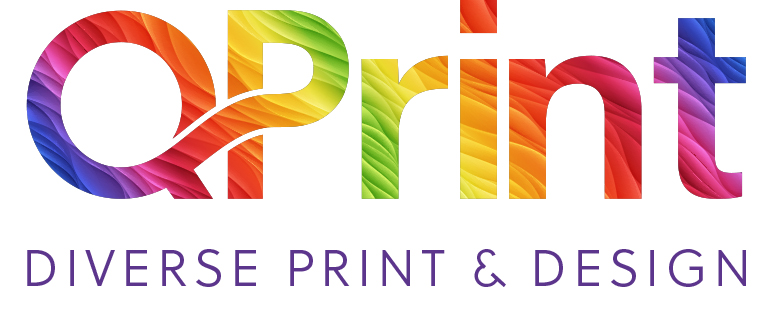As a small/ medium-sized business owner, if you are new to printing, you may not appreciate that the format of print is just one part of the jigsaw. You may be so focused on deciding the paperweight, size or format of your printed item that you forget to consider the creative layout. It is always worth remembering that less is more and being single-minded when drafting your design. In our latest blog, we wanted to share some things to consider when preparing your creative for print.
1. Spot vs CMYK colour
Spot colour is a pre-mixed Pantone-matched colour used in general print and often for promotional items. CMYK by contrast is made up of the four basic print colours cyan (blue), magenta (pink), yellow and black so it is a more cost-effective way to produce multicoloured print projects, also used for digital printing. The CMYK route may also be slightly more environmentally friendly because you can produce multiple jobs simultaneously with less preparation and washdowns required. It is also more economical to use the CMYK colour for smaller print runs. If there is a choice between these options the CMYK route is generally used as is more efficient. However, sometimes we see that bigger brands may prefer spot colour as the colours are more vibrant.
2. Vector vs Rasterised Images
A rasterised image is compiled using pixels and used for photographs and digital platform images eg: websites, social media, mobile devices, etc. As they are resolution dependent when the images are enlarged the pixels become stretched and lose quality and sharpness. We assess the quality of a rasterised image via dpi (dot per inch), the higher the dpi the higher the resolution. For printing the resolution of all images should be at least 300 dpi. It is important to be careful when using images from the web as they are usually a lower resolution (72 or 96 dpi) and do not reproduce well in print.
Vector graphics are images created with a series of geometrically defined points, lines, and shapes. which can be used for larger print items such as billboards, outdoor posters and brand logos, they won’t lose quality when enlarged.
3. Crop Marks
Crop marks are short lines positioned just outside of the corners of a print job to indicate where the print item should be guillotined. When printing CMYK, they would also appear on the plates to help with plate alignment.
4. Bleed and Safe Zones
Bleed is where any colour or image that runs to the edge of a page, extends past the cut line. Having bleed ensures there is no gap between the background colour or image at the edge of the page. A safe zone is also essential to avoid any key image or text being trimmed off if there is any shift in guillotining.
5. PDFs and file formatting
PDFs are the preferred format for supplying creative as they are a multi-platform file, meaning they can be opened on various computer systems. When creating a PDF you should export using the highest quality for print, and ensure all fonts are embedded.
6. Digital vs traditional printing methods
Digital presses run slower at around 5,000 sheets per hour, but as no plates are required, it is more cost-effective for smaller runs. However, for longer runs litho presses are much more cost-effective, primarily because of the speed they run, exceeding an impressive 15,000 sheets per hour!
7. Fonts
Fonts are not always transferable between computer programmes. To ensure your artwork does not revert to a default font when opened by the printer, please ensure you embed or outline your font, before preparing your PDF for production. Fonts should also, always adhere to your brand guidelines.
Did you know that we can create and prepare the artwork for your next print job? To see how the Q Print team can help with your next print project, get in touch to arrange a no-obligation discovery call.
